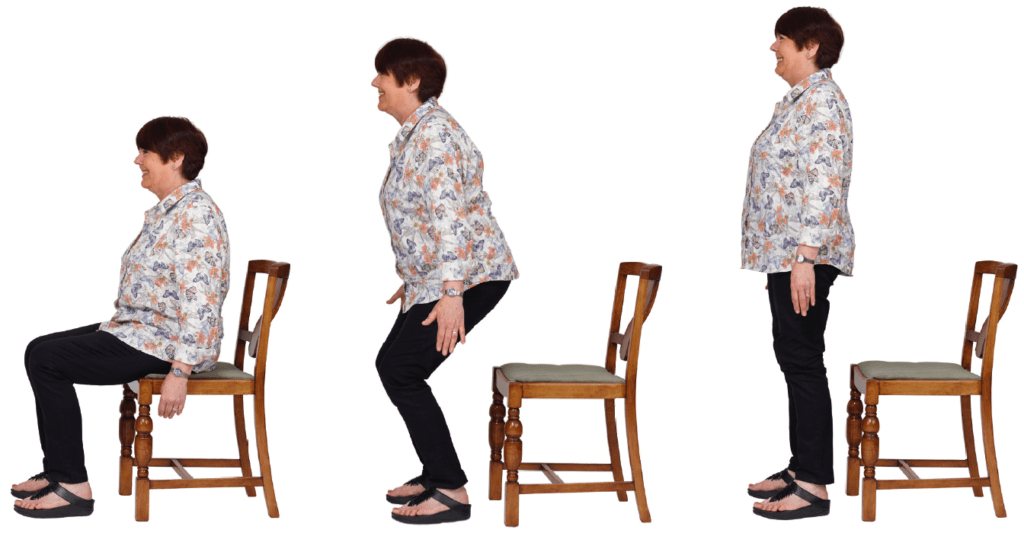
Maintaining strength and mobility becomes increasingly important as we age, especially for those of us over 70. The sit-to-stand exercise is a fundamental yet powerful movement that I’ve found essential for boosting overall mobility, stability, and daily functioning. More than just a workout, it’s a practical way for seniors to build leg strength, improve balance, and maintain independence. If you’re looking for a way to stay active and preserve your quality of life, this may be the most important exercise to add to your daily routine.
Why Sit-to-Stand Is Crucial for Seniors
The sit-to-stand motion replicates many everyday movements, like getting out of a chair, getting into or out of a car, and even getting up from bed or the toilet. Many seniors find these tasks more challenging due to muscle weakness, poor balance, or improper movement patterns. By regularly practicing this exercise, I’ve strengthened key muscles like my quadriceps, hamstrings, and hip flexors—all vital for maintaining balance and stability. Strengthening these muscles significantly reduces the risk of falls, which can lead to severe injuries in older adults.
Additionally, improving the sit-to-stand movement has enhanced my overall mobility. With pain-free movement, I’ve been able to maintain my independence and enjoy everyday activities. Tasks such as walking, climbing stairs, and even moving around the house have become easier since incorporating this exercise into my daily routine.
How to Perform the Sit-to-Stand Correctly

Like with any exercise, proper form and technique are essential to prevent injury and achieve optimal results. Here’s what I’ve learned to perform the sit-to-stand safely and effectively:
- Position Yourself at the Chair’s Edge: Start by shuffling forward to the edge of your chair. Sitting too far back makes it harder to stand up without using your hands. Moving forward ensures you’re in the ideal position.
- Place Your Feet Properly: Keep your feet flat on the floor, positioned just behind your knees. This allows your legs to do most of the work as you stand up using forward momentum.
- Stand Without Using Hands: A key aspect of the sit-to-stand is standing up without pushing off with your hands. Engage your leg muscles by pressing through your heels instead of your toes.
- Maintain Knee Alignment: A common mistake is allowing the knees to collapse inward (valgus), which can weaken your hips and affect stability. Always ensure your knees are aligned with your feet during the motion.
- Control Your Descent: When sitting back down, bend from the hips first rather than just the knees. Lower yourself slowly and aim to sit without making a sound, which demonstrates control and strengthens your muscles over time.
Common Mistakes to Avoid

Even with the best intentions, it’s easy to make errors while performing the sit-to-stand. Here’s what I’ve learned to avoid:
- Pushing Off with Hands: While it may seem easier to push off with your hands, this prevents you from fully engaging your leg muscles. The goal is to strengthen your legs, so resist the temptation to use your hands.
- Not Shuffling Forward: If you don’t move to the edge of the chair, standing up becomes much more difficult, increasing your risk of losing balance.
- Allowing Knees to Collapse (Valgus): When your knees collapse inward, your hips become weaker and less stable. I visualize keeping a space between my knees to ensure proper form.
Why Consistent Practice Matters
Consistency is key when it comes to the sit-to-stand exercise. Performing five repetitions at least three times a day will yield noticeable results within weeks. According to experts, seniors who practice this regularly can see improvements in strength and mobility within six weeks, making daily tasks like getting out of a car or rising from the toilet much easier and safer.
This simple exercise also enhances balance, which is crucial for preventing falls as we age. By strengthening your leg muscles and improving your gait, you significantly lower your risk of falls and the injuries that can follow.
In Conclusion
The sit-to-stand exercise is now a staple in my daily routine. It enhances my strength, balance, and mobility, making me feel more capable and independent in everyday activities. For seniors looking to stay fit and avoid the typical pitfalls of aging, this exercise is a must. Whether it’s walking, climbing stairs, or standing up from a chair, you’ll notice improved confidence and ease in your movements with consistent practice.
So, take a seat, shuffle forward, and start mastering the sit-to-stand today!















